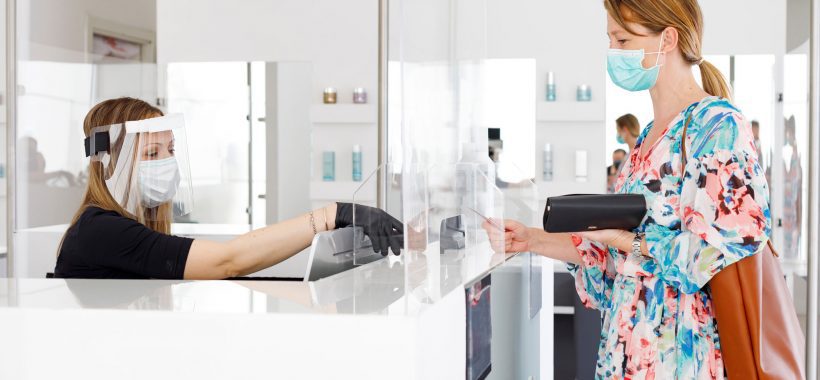Rapid Antigen Test for COVID-19 for the detection of the Sars-Cov-2 virus: an effective and easy-to-use test
The COVID-19 screening test sold to businesses and individuals requires a nasal or nasopharyngeal swab, while the PCR test performed in the clinic requires a nasopharyngeal swab. The nasal screening test sold to individuals can be carried out by the person themselves without calling on a health professional.
The Sars-Cov-2 virus rapid antigen test is a quick and easy way to detect the presence of the virus in a sample.
The rapid antigen test (ART) looks for the presence of the external proteins of the Sars-Cov-2 virus in the sample and is a simplified testing technique recognized by public health. The antigen test is a manual test, read directly on a plastic device, similar to pregnancy tests sold in drugstores. The result is displayed on average after 15 to 20 minutes of waiting with a maximum of 30 minutes. The results are displayed as lines that appear on the device.
When to use a rapid antigen test for COVID-19?
The rapid antigen test is used in the context of:
– Screening in the workplace, as a preventive measure.
– Screening of individuals who believe they have been or have been in contact with people with COVID-19 and want to know their state of health.
A rapid antigen test is carried out on people suspected of having contracted COVID-19. Most of the tests offered must be done within 6 days of the onset of symptoms.
Material needed to perform a COVID-19 Antigen Test
The rapid antigen detection test is a simple test to perform and requires few materials.
– A rapid antigen test box usually contains the following items:
– A reagent solution (buffer solution), individually sealed test devices, individually sealed swabs, extraction tubes, tube nozzles and of course, instructions.
Regarding the instructions for use, each test is different, but the procedure is quite similar: after taking a nasal swab with the swab, it is dipped in an extraction tube previously filled with buffer solution and compressed its contents on the edges of the tube. Subsequently, a nozzle is placed which will allow a few drops of the mixture of nasal secretions and buffer solution to be deposited on the test device.
If the test administrator is not the person themselves, then it is appropriate that they wear gloves and a protective mask.
How do you interpret an antigen test result?
The result of the antigen test is read by looking for the presence or absence of lines on the plastic device.
- A negative result is observed when only one line appears opposite the letter C (control).
- A positive result is observed if two lines appear on the device: one line opposite the letter C (control) and one line opposite the letter T (test).
- An invalid result is validated if there is no line opposite the letter C (control).
If your result is positive, you must report it to the Quebec Ministry of Health.
For more information on using and interpreting the results of an antigen test, watch our “how to do an antigen test” video. This video shows how to properly use the Rapid Response antigen test. On the other hand, the technique presented can very well be transposed to several other rapid antigenic tests, only a few elements of equipment may differ.
How long does it take for a rapid antigen test to produce a result?
The time required for the reaction to occur may depend on these factors, among others:
– The type of swab used: some swabs seem to attract more viruses to the surface and therefore allow better analysis.
– The concentration of the virus in the sample: if the sample does not contain enough viral particles, their detection may take some time. A high viral load will show results faster than a lower viral load.
Typically, you get your test result in 15-20 minutes.
Why should you use Rapid Antigen Tests?
Rapid Antigen Tests detect the presence of the antigen of a virus. They are faster and easier to use than PCR tests. They are also less expensive and can be used for screening and confirmation purposes.
Is a nasal antigen test painful?
No. The nasal antigen test is not painful, only sometimes a little uncomfortable due to the swab having to go into the nose.
Are antigen tests reliable? Antigen tests are reliable and the results are easy to read and can be interpreted quickly. For more information, please see our COVID-19 Antigen Tests offer.






